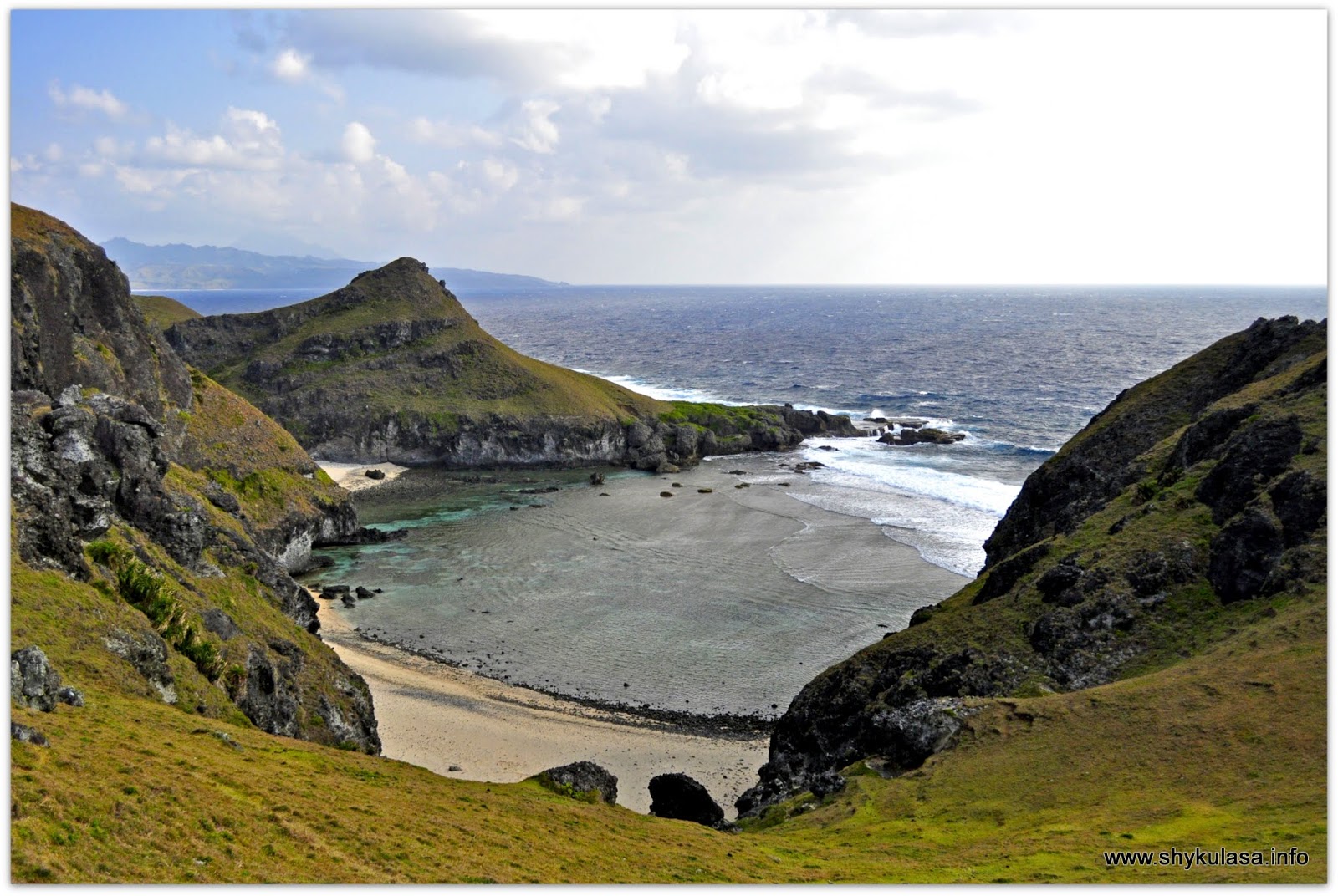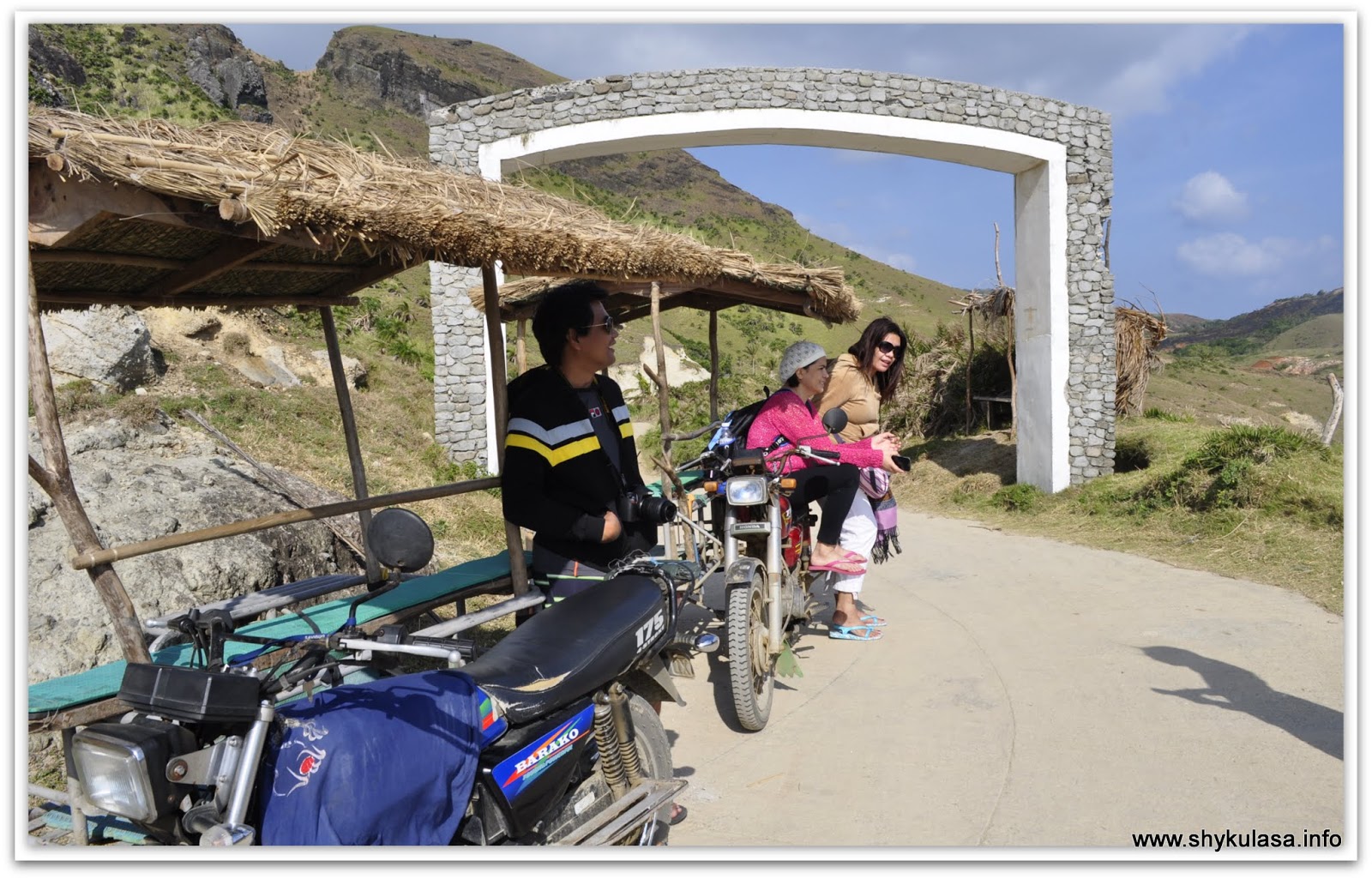BATANES : FALUWA and SABTANG TOUR on Day 2
If I need to mention the highlight of our Sabtang tour, it must be the thrilling experience of riding a Faluwa boat going to Sabtang Island. Faluwa is a sturdy traditional Ivatan boat built without outriggers to withstand the often rough and turbulent waters of the Pacific Ocean and the China Sea. It is no ordinary boat ride. Back then, the thought of riding a Faluwa scares me hence the thought of skipping Sabtang Island from our itinerary always crossed my mind. But on second thought, the stomach turning boat experience is one I have to endure, to claim the bragging rights: I've indeed experienced BATANES.
Our day started really early; We're done with breakfast by 5:30 AM and on the road by 6am. Sitting at the back, I opened the window on my side and turn my face into the cold, chilly wind as our van travel along narrow coastal roads, while occasionally extending my hands outside, holding a GoPro to capture the stunning vistas in almost every direction. Blowing of horns is a matter of necessity here due to several blind corners that may conceal oncoming traffic.
I envy those motorbike riders behind us for the reason that I feel it's the best way to see Batanes without obstruction. Next time, I'll be in one, but with an experienced driver in tow, so I can concentrate on filming the scenic views. :)
At the Ivana port, townsfolk and tourists alike were readying to board the Faluwa.You can easily distinguish which is which. Those donning neon orange vests like us, hurriedly look for seats at the back while the locals prefer to stand in front and enjoy the stomach turning ride that includes the occasional splashes of waves thrown their way. Our group took the front seats and seeing how calm the faces of the locals while the Faluwa gyrated to the waves gave me a good sense of security. It's like them saying "this is nothing but normal my dear".
After 30 minutes, Sabtang island came into full view with this lighthouse prominently standing to welcome us.
On Sabtang Island, population is even smaller than on Batan Island but stone houses are still in abundance. The island also boasts of spectacular rolling hills, white sand beaches, beautiful coastal roads and rock cliffs. We also saw from a distance a 3000 yr old fortress carved into the mountain used by warring tribes in the island.
Although we didn't have to utilize a tricycle during our Sabtang tour (although I feel it will be a lot of fun riding one), it's interesting to see how they use indigenous materials to build its side car.
Instead, we found ourselves cruising along the coastal roads of Sabtang Island on board a van with the doors open (upon our request) to fully enjoy the scenic views that surround us, as we hop from one place to the other.
If you're intrigued how the traditional Ivatan headgear called VAKUL is made and how you'd look like wearing one, visit the Sabtang Weavers Association here in Chavayan Village.
You need to follow the foot trails to get to the viewing area where a beach cove is hidden between rolling hills or you can choose to frolic around and then reenact one of the famous scenes of the Sound of Music. :)
Rocky cliff coupled with strong wind prevented us to go down a bit further, but that didn't stop us from admiring the place any less.
There's also a restaurant in this area where we had a filling Ivatan lunch as part of the tour.
After a satisfying lunch and an awe-inspiring experience despite the short stay, everyone needed to be at the port by 1pm to catch the Faluwa ride going back to Batan Island. It's possible to book a home stay at one of the stone houses at the Chavayan Village. Immersing oneself to the charm of spartan living is probably the most ideal way to experience Batanes and I'll do that next time I have the chance to visit this place again.
Stay tuned for more Batanes posts to come. If you visit Batanes, don't skip Sabtang Island for fear of riding a Faluwa otherwise you'll blow your chances of catching a glimpse of Batanes in it's most unadulterated form.
Our day started really early; We're done with breakfast by 5:30 AM and on the road by 6am. Sitting at the back, I opened the window on my side and turn my face into the cold, chilly wind as our van travel along narrow coastal roads, while occasionally extending my hands outside, holding a GoPro to capture the stunning vistas in almost every direction. Blowing of horns is a matter of necessity here due to several blind corners that may conceal oncoming traffic.
ALSO READ:
At the Ivana port, townsfolk and tourists alike were readying to board the Faluwa.You can easily distinguish which is which. Those donning neon orange vests like us, hurriedly look for seats at the back while the locals prefer to stand in front and enjoy the stomach turning ride that includes the occasional splashes of waves thrown their way. Our group took the front seats and seeing how calm the faces of the locals while the Faluwa gyrated to the waves gave me a good sense of security. It's like them saying "this is nothing but normal my dear".
After 30 minutes, Sabtang island came into full view with this lighthouse prominently standing to welcome us.
On Sabtang Island, population is even smaller than on Batan Island but stone houses are still in abundance. The island also boasts of spectacular rolling hills, white sand beaches, beautiful coastal roads and rock cliffs. We also saw from a distance a 3000 yr old fortress carved into the mountain used by warring tribes in the island.
STONE HOUSES AT SAVIDUG AND CHAVAYAN VILLAGE
BATANES and stone houses have become synonymous with each other and it's here on Sabtang Island where you'll see them in abundance. Ivatan stone houses are designed to withstand harsh elements and are made of limestones and corals with roofing made of cogon grass. |
| Stone Houses at SAVIDUG |
 |
| OLD BEATERIO AT SAVIDUG |
 |
| STONE HOUSES AT CHAVAYAN VILLAGE |
 |
| CHAVAYAN VILLAGE CHURCH |
If you're intrigued how the traditional Ivatan headgear called VAKUL is made and how you'd look like wearing one, visit the Sabtang Weavers Association here in Chavayan Village.
CHAMANTAD-TINYAN VIEWPOINT
If Batan Island has Racuh-A-Payaman aka Marlboro Hills, Sabtang Island on one hand has Chamantad-Tinyan Viewpoint to show off. |
| CHAMANTAD TINYAN VIEWPOINT |
 |
| BEACH COVE BETWEEN ROLLING HILLS |
Rocky cliff coupled with strong wind prevented us to go down a bit further, but that didn't stop us from admiring the place any less.
MORONG BEACH/NAKABUANG BEACH
You've probably seen this natural rocky formation called Nakabuang arch on travel magazines that is widely associated with Batanes. This iconic beach is located in Sabtang Island. The white sand is fine and the waves are tolerable enough for a swim. |
| lone resto at Morong Beach |
Stay tuned for more Batanes posts to come. If you visit Batanes, don't skip Sabtang Island for fear of riding a Faluwa otherwise you'll blow your chances of catching a glimpse of Batanes in it's most unadulterated form.












Good storytelling! So, when do you plan on going back to immerse yourself in the charm of spartan living (just asking)? Have a great day :)
ReplyDeleteThanks Pat! :) Well, let's see! Maybe when promo fares are just too hard to resist, haha. Have a nice day ...
Delete